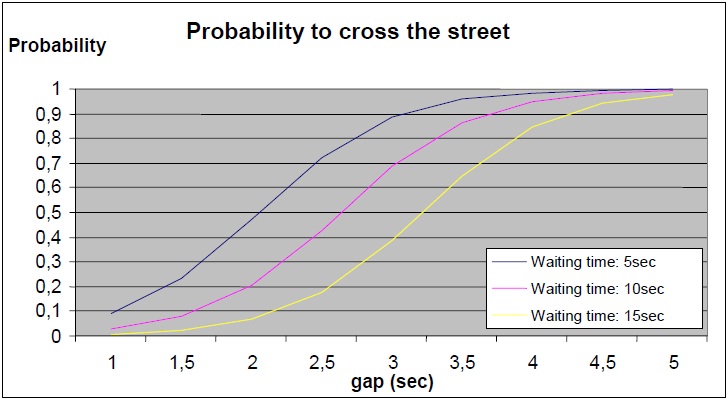
This research aims to investigate pedestrians traffic gap acceptance for mid-block street crossing in urban areas. In particular, two aspects of pedestrians crossing behaviour at mid-block locations are examined, namely the size of traffic gaps accepted by pedestrians and the decision or not to cross the street, as well as the related determinants. For this purpose, a field survey was carried out at an uncontrolled mid-block location in the centre of Athens, Greece. In this survey, pedestrians crossing decisions were videotaped in real traffic conditions. At the same time, the speed of incoming vehicles was measured by means of speed guns. The data collected included the number and the size of traffic gaps rejected or accepted by pedestrians, the related waiting times and number of crossing attempts, the vehicle’s speed, as well as individual characteristics (gender, age etc.). A lognormal regression model was then developed in order to examine the effect of various parameters on pedestrian gap acceptance, defined as the size of traffic gaps accepted by pedestrians. It was found that pedestrian’s gap acceptance was better explained by the distance from the incoming vehicle, rather than its speed. Moreover, the presence of illegally parked vehicles (which may affect pedestrians’ visibility), the size of the incoming vehicle and the presence of other pedestrians were found to have important effect on the size of traffic gaps accepted by pedestrians. A binary logistic model was also developed in order to examine the effect of the traffic gaps available and of other parameters on the decision of pedestrians to cross the street or not. The modeling results reveal that this type of crossing decision is largely defined by the distance from the incoming vehicles and the waiting time of pedestrians.
| ID | pc105 |
| Presentation | |
| Full Text | |
| Tags | road infrastructure, statistical modelling, traffic management |













